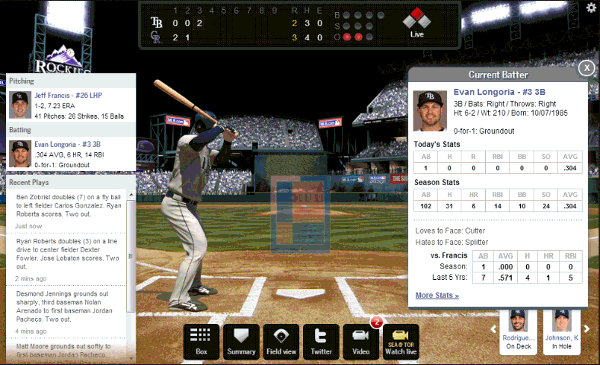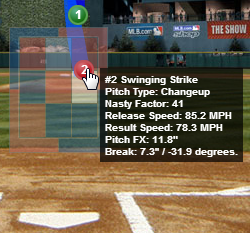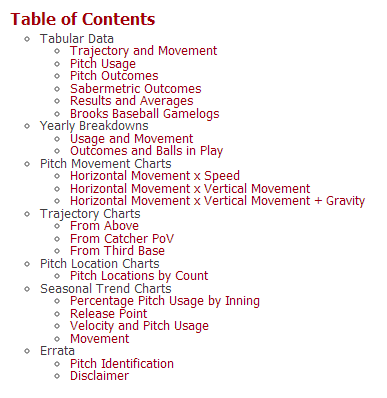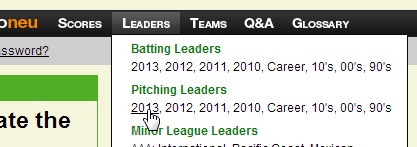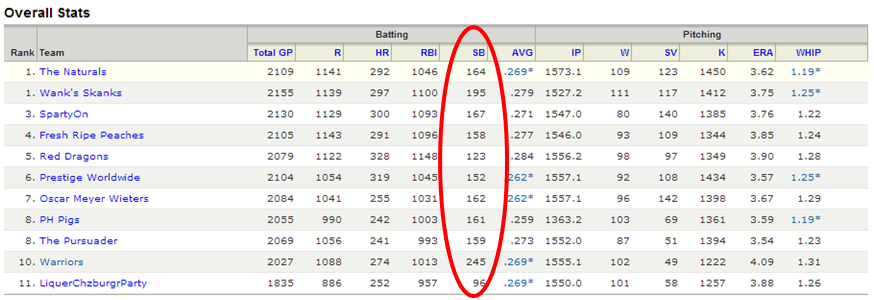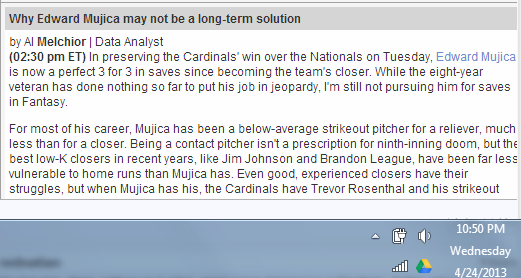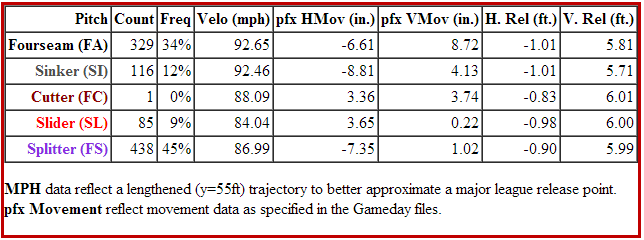We’re now into May. For the last month you’ve been beaten over the head with fantasy advice telling you to wait until at least May before making any significant moves.
You’ve exercised patience. You haven’t made any brash decisions. But maybe you’re still sitting with B.J. Upton (.149 BA), Ike Davis (.167), Will Middlebrooks (.193), Jose Bautista (.205), Edwin Encarnacion (.221), Matt Wieters (.224), or Martin Prado (.232) on your team.
Or maybe you’re me, with all of them…

But what do these batting averages mean? How bad are they? How far are they from being acceptable? What would one good week do to a struggling player’s average?
I’m Glad You Asked
But first, let’s gain a little perspective. I may have a fundamental flaw in the construction of this team, because with the exception of Prado, none of these guys could be expected to hit .300. Here are their current year and career batting average and BABIP at the time of this article:

From looking at the career BABIPs and their BABIPs to this point, it’s clear that each of these players has been “unlucky” to some degree (many of their BABIPs are 80 to 100 points below career levels).
With that in mind, let’s play a simple game of “what if”.
What If Each of These Guys Had Five More Hits Since Opening Day?
As I mentioned above, we’re at about the 30 game mark for most teams. We’re at the end of the fifth week. What if, over the five weeks, each of these players had JUST ONE MORE HIT EACH WEEK? I’m not asking for the world here. Just one more hit each week, for a total of five more hits since opening day.

Look at the column “BA w/ 5 More Hits”. That looks a lot better, doesn’t it? Most of the players see their average jump at least 50 points. In fact, of the seven players listed, three of them (Bautista, Encarnacion, and Wieters) actually SURPASS their career batting averages under this scenario. And four of the seven players reach the .250 mark (Bautista, Encarnacion, Wieters, and Prado).
Things are not as bad as they seem.
Yeah, But Those Five Hits Didn’t Happen…
You’re still skeptical? I’d be seeing the glass as half-empty too if I had any of these batting average leaches on my team… Oh wait. I have them all.
But if you’re not sold on five bloop hits dropping in over the course of a month, let me propose another scenario.
What If Each Of These Guys Has A Good Week Starting Tomorrow?
And let’s keep it reasonable. We’ll say they go 10-for-25 next week for a .400 batting average. Continue reading “Running the Math on Early Season Batting Averages”
